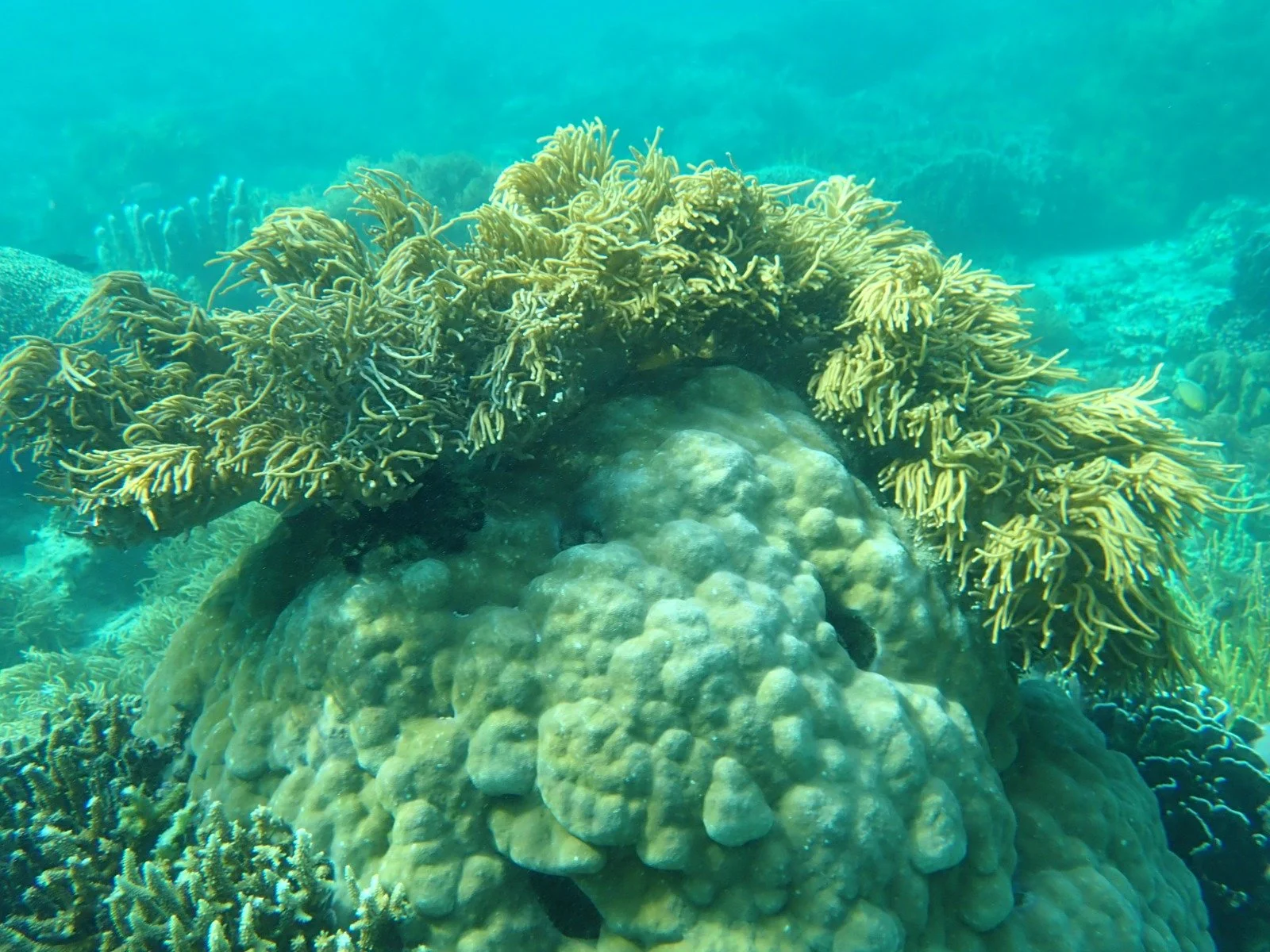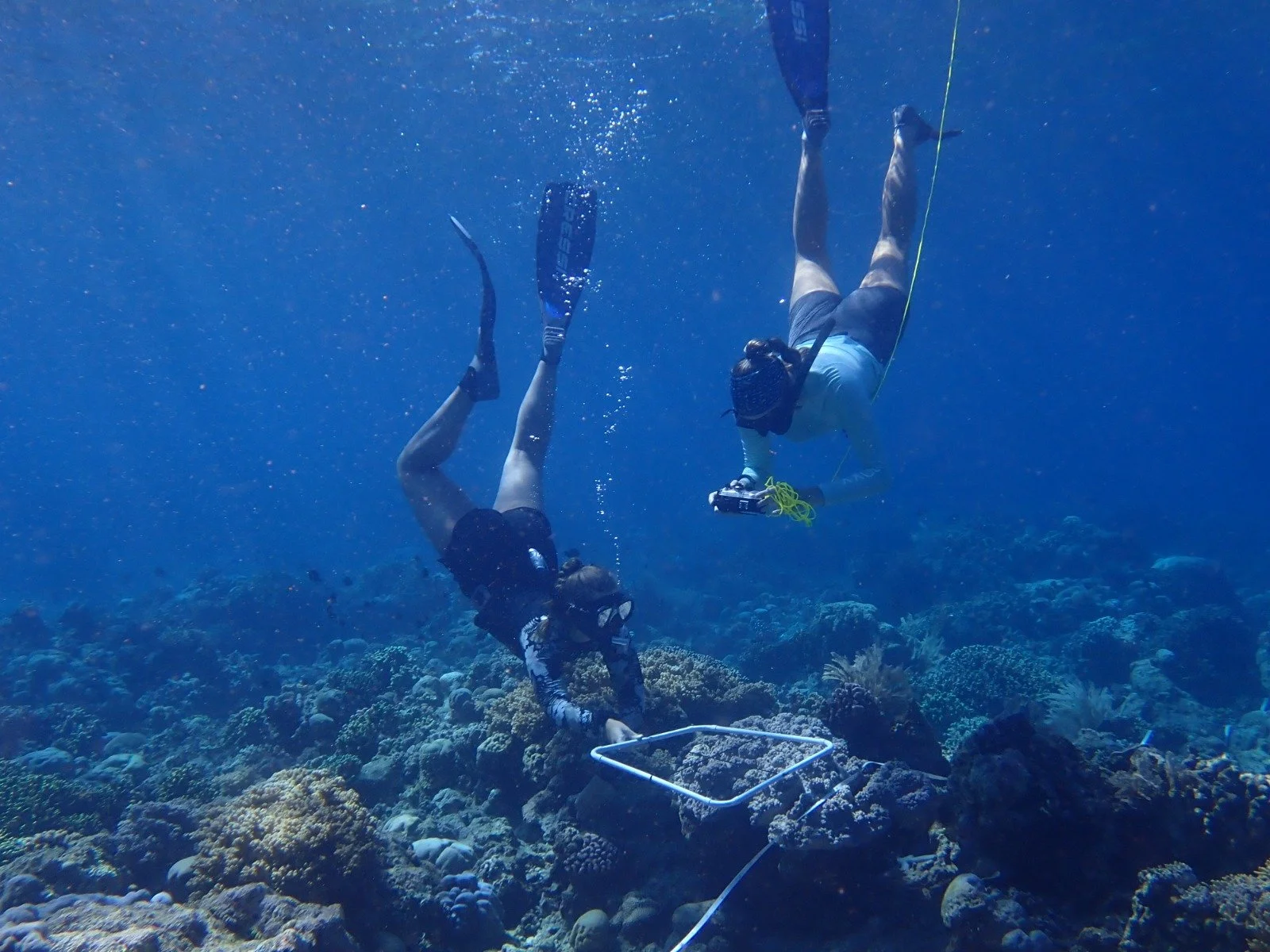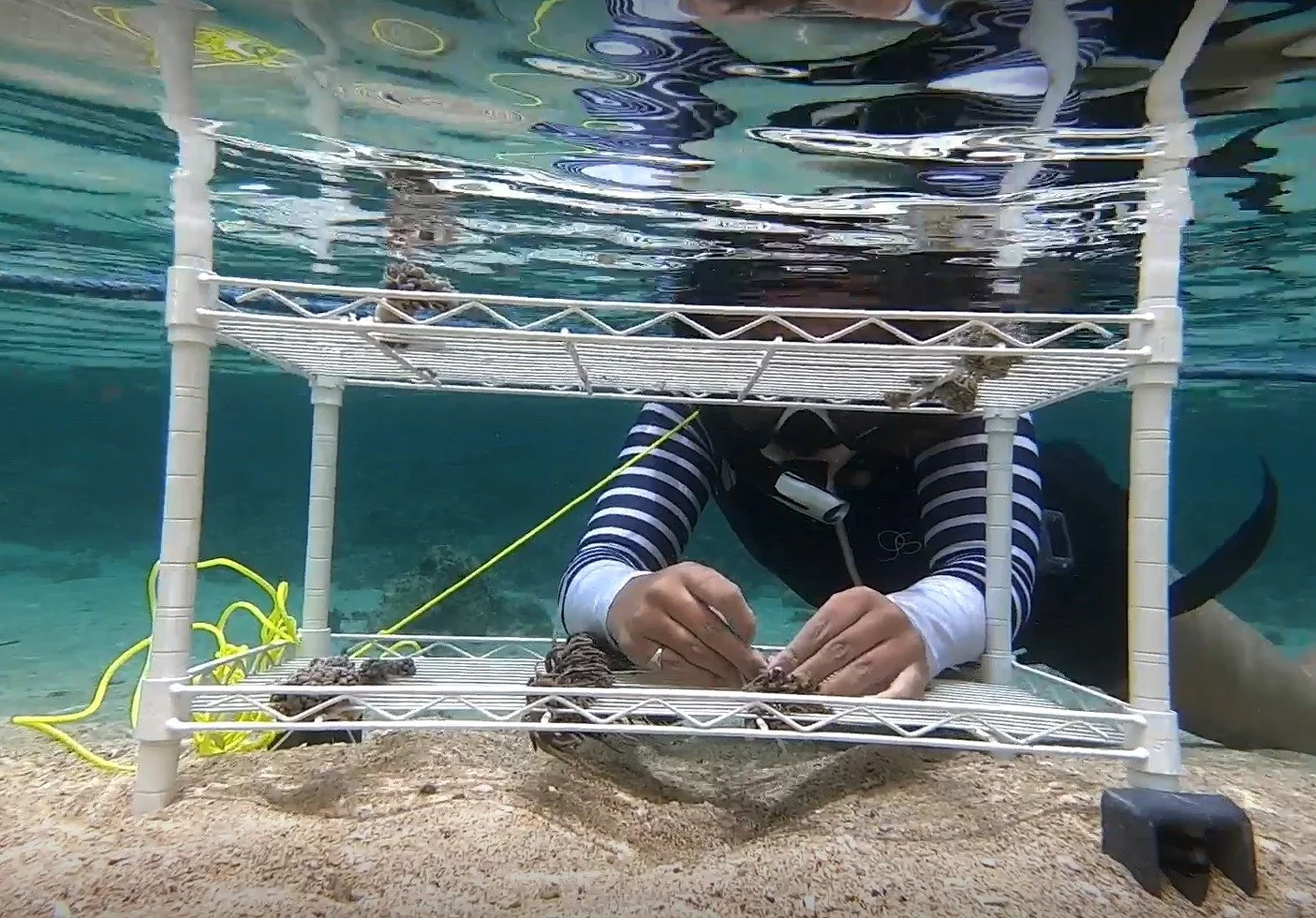Soft Coral Dominated Reefs
Across the Indo-Pacific, coral reefs are undergoing profound transformations.
As human-induced stressors increase and environmental conditions become more variable, reef ecosystems are shifting. In many places, hard coral communities are being replaced by soft coral assemblages, a trend that challenges our understanding of how reefs function and recover.
understanding soft coral impacts to guide coral reef conservation and restoration
In 2024, Molly Blyth, a postgraduate researcher from the University of Plymouth, conducted fieldwork in North Sulawesi to study these transitions. Under the supervision of Dr. Miriam Reverter, and with support from Coral Eye, Molly investigated how and why soft coral–dominated reefs emerge, and what their rise means for the future of reef conservation and restoration.





